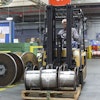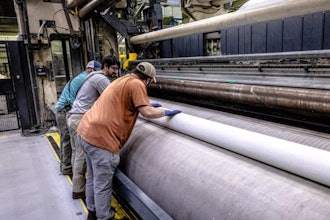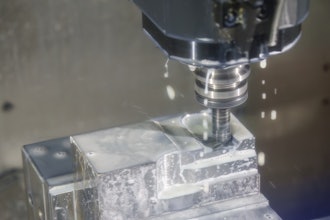I dare say there are few, if any, North American factories that are still using the same equipment, assembly systems, and processes to manufacture goods and products that they were using 20 or 30 years ago. New technologies are constantly being introduced and incorporated, and many are resulting in scores of benefits - from improved product quality and customer satisfaction to reduced costs and enhanced efficiencies.
Unfortunately, when it comes to cleaning and maintaining industrial facilities, few new cleaning programs and technologies have been introduced in the past 30 years, and of those that have, few have produced significantly healthier results.This may be why so many health complaints in industrial, commercial, and educational facilities can be tied to ineffective cleaning.
It isn’t that those responsible for cleaning are not conscientious in their efforts; instead, it’s often because not enough is known - at least in fundamental scientific terms - about what they are confronting. Indeed, many times, even the most meticulous of cleaning workers unknowingly compromise their own health and that of factory workers and other building occupants through improper cleaning methodologies because the science to make those processes safer either doesn’t exist or is not well known.
Unfortunately, the cleaning industry itself is largely to blame for this state. In general, the industry has been overly guided by the desire to market new products - many of which are not necessarily the result of true scientific research.
Indeed, many JanSan - janitorial/sanitary - manufacturers have invested little in research and development to discover what is actually required to produce a sanitary outcome; and they have not used a scientific method to validate their claims. What is frequently passed off as science in cleaning is often just theory or opinion and is not supported by hard data or evidence. Therefore, this “science” in cleaning is often veiled pseudoscience that results from improper, yet innocent, scientific processes. Or, at its worst, it results from a purposeful attempt to mislead for commercial gain.
The symptoms of this condition are numerous. For example, throughout the cleaning industry - a huge, well-established, $60-plus billion industry - there is still no universal agreement on the definition of “clean.” Further, few cleaning standards, systems, or procedures have earned “best-practices” status in which the methods have been tested and approved through science and research.
Also, many of the tools that most cleaning workers are forced to use are obsolete and ineffective. Just look at the tools custodians use in industrial facilities, including mops, buckets, cloths, and sprayers; they are not much different from those that were used in factories 40 years ago.
It’s no wonder that today most people, including many industrial and commercial facility managers, do not really understand and appreciate the value of cleaning and maintaining a healthy work space. In truth, neither do many of those in the cleaning profession.
Turning Tides
If the current scenario is to ever change and benefit the manufacturing facility, it is important for the cleaning industry to turn to science in the pursuit of truth and knowledge. For instance, we need:
• More credible research on all aspects of cleaning and its associated processes, which can lead to more professional and effective cleaning
• To better understand how cleaning contains and removes pollution
This type of science will not only help us understand how cleaning affects the environment, but it will also lead to the development of quality cleaning products and procedures designed for special environments with specific needs. Ultimately, it will drive the development of new cleaning technologies, systems, chemistry, and methods to improve the indoor environmental quality for all types of buildings, regardless of use and surroundings. Just as important, scientific data and evidence will help us discern truth and knowledge from mere hype and opinion.
Facility Managers Can Spur the Industry
Managers of manufacturing facilities can also help spur the industry forward in producing cleaning tools and equipment that are engineered based on scientific research to be more effective and hygienic. They can do this by insisting that their JanSan distributors provide supporting evidence from independent, third-party organizations that validates the cleaning claims of the products they are considering purchasing.
Additionally, managers should make providing "scientific" criteria a central part of the competitive bid and evaluation process when selecting new cleaning products, tools, and equipment. This can include asking for objective, measurable criteria for such important factors as: soil removal; product performance; worker productivity rates; the affect or lack of affect the product may have on indoor air quality.
These scientific measurements serve a secondary purpose as well. They can also be used to judge the effectiveness of the cleaning programs and tools currently being used in a manufacturing facility. An example of this would be using a urine detection kit, now readily available from some JanSan distributors, to see how well their current cleaning products perform. The same system can be used to test the new tools and equipment under consideration as well. For instance, in one recent study it was reported there was little difference in the effectiveness of microfiber mops over conventional string mops. And neither system performed well when compared to a “No-Touch” Cleaning system. These are the types of studies facility managers should be asking for when selecting cleaning equipment for their locations.
To comment on this story, email us at [email protected]


















